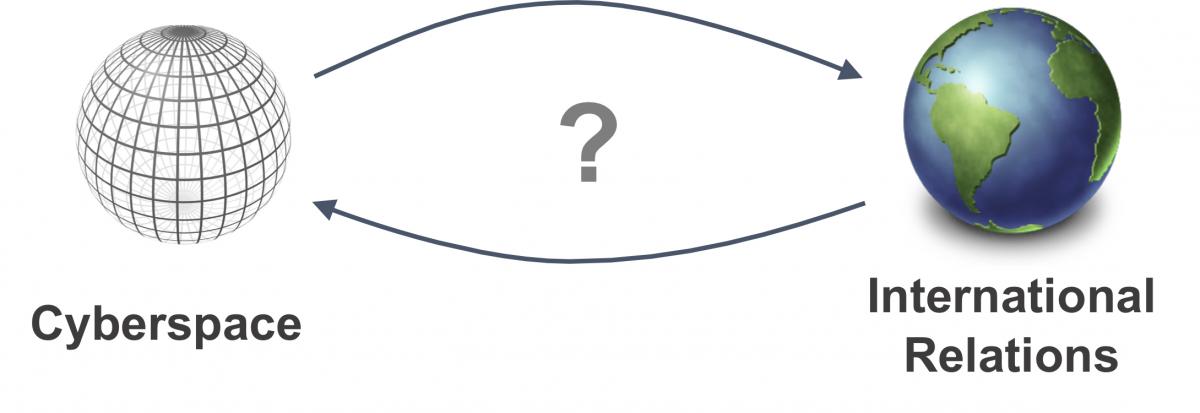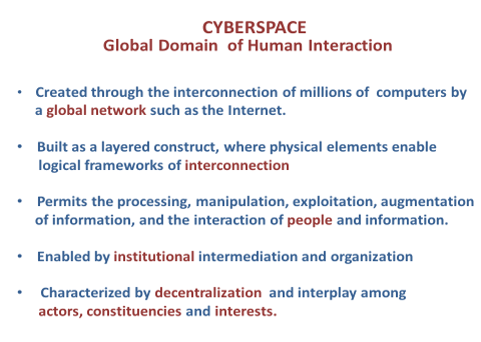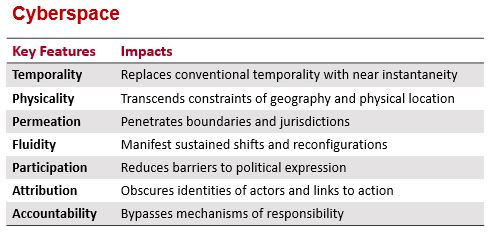The world today is powerfully connected to - if not anchored in - the cyber age and its dynamic and changing configurations. There is as yet no persuasive theory or empirically-based method to address the new reality shaped by cyberspace and its increasing pervasiveness in nearly all domains of human activity. We can appreciate how the realities of the 21st century are increasingly inconsistent with 20th century theory, politics, policy, and practice.
The question mark in the figure below captures the challenge, namely, to reduce the gap in our understanding. This gap is augmented by differential rates of changes along each trajectory of the arrows. The dynamics embedded therein are driven by technology, policy, and practice. The challenge embedded in the question mark must be “unbundled” and its elements identified.

The challenge is to reduce the disconnect between cyberspace and the conventional venues of international relations, and help create the fundamentals for aligning contemporary international relations theory, policy, and practice with the emergent complexities of the twenty-first century. Clearly, each of these two “spaces” – the cyber and the international – are defined by different core principles and characterized by distinct features of structure and process that enable, and are enabled by, a wide range of actors and activities.
The complexity of interconnections between of cyberspace and international relations requires a multidisciplinary approach for assisting stakeholders —including governmental, scientific, and industrial stakeholders — in (a) sharing a common understanding of the challenges, (b) accessing relevant knowledge bases, (c) exchanging expertise and perspectives, and (d) enhancing and improving all cyber-related capabilities.
CyberIR@MIT was designed in response to such daunting conditions. It is constructed around interactive knowledge resources and supported by a set of functionalities associated with research, policy, and practice.
As an interactive knowledge system, it supports an evolving, quality-controlled database that includes submissions by users and provides search options over the entire knowledge base's component-domains (or topics), consisting of detailed knowledge-profiles of actors, actions, problems, and solution strategies.
There is limited understanding of how cyberspace influences international relations, and how power and politics in international relations influence the conduct in, and management of, cyberspace--or how these shape the configuration of this domain.
New Reality
Cyberspace creates new conditions-problems and opportunities-for which there are no clear precedents in human history. Already we recognize new patterns of conflict and contention, and concepts such as cyberwar, cybersecurity, and cyberattack are in circulation, buttressed by considerable evidence of cyber espionage and cybercrime.

New Parameters
Key cyber features that are particularly challenging for all faces of international relations and world politics are related to theory, policy, and practice.
It is not difficult to appreciate that these features, individually and collectively, challenge the core principles of sovereignty, authority, and jurisdiction as well as a whole range of fundamentals that provide order and stability in the modern world order.
